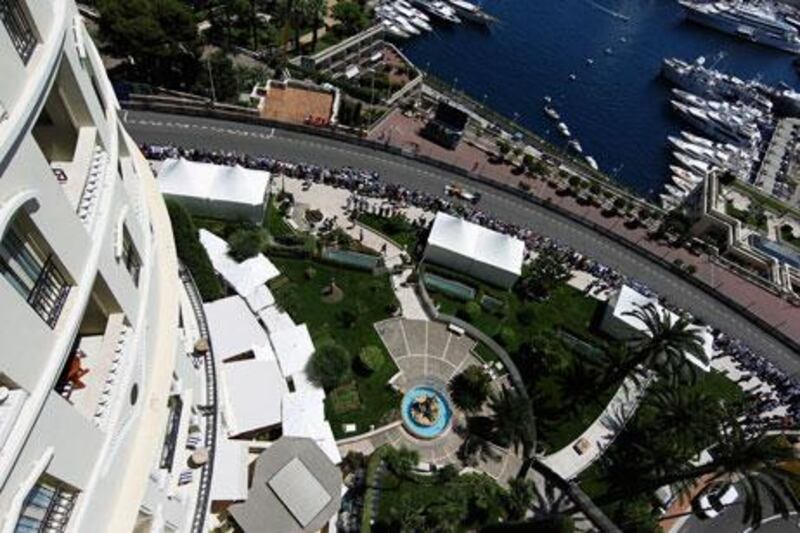Only in Monaco would a track so narrow, so winding and ultimately so dangerous remain on the Formula One calendar for 69 years. Only in Monaco would access to that same street circuit be open to the public for 12 hours each day.
And only in Monaco would the public choose to revel in the festival atmosphere on the track until the sun begins to awake over the Mediterranean.
As Lotus Renault's official Twitter account observed yesterday: "Just how Champagne soaking of the road affects the chemical grip of this year's Pirellis remains to be seen."
Only in Monaco would you see off-duty engineers from one of the smaller racing teams at 3am on the day of a grand prix.
Only in Monaco would a reporter find himself on duty and interviewing a restaurant manager at 3am on the day of a grand prix.
"Monaco is an anomaly," said one journalist, who requested anonymity.
"It's the one weekend of the year when everybody - teams, media, everyone - stay out until 6am and go to work … at 9am."
Several of the restaurants, cafes and bars see their working hours disrupted by the infrastructure involved in constructing the Circuit de Monaco street track.
During the three months leading up to and directly proceeding the principality's annual grand prix, Explorers Piano Bar, a popular restaurant located close to La Rascasse corner, sees its 150-seat terrace reduced by two-thirds and for the four days of on-track action the entire business is forced to remain closed until 7pm.
Outside of grand prix weekend, it usually opens for business at midday.
"During the GP we open at 7pm because we have the race all day long and the track runs through our boardwalk," said Julien Quinson, the Frenchman in charge of Explorers.
"We close for lunch, but at least we open at night. Yes, we lose some money, but it's part of the Grand Prix; it's part of the game. Monaco is grand prix racing.
"And it's beautiful during these four days.
"We can't complain. People come from all over the world. If they are happy, I am happy. Voila."
And they are happy - some of them ecstatic - to be involved in Formula One's most spectacular race.
In the early hours of Sunday morning, Explorers was buzzing, as were its neighbouring restaurants along the street.
The track was so thronged with people it looked like a protest, but instead of placards the revellers held cameras and cocktail glasses. A woman in a Carnival-esque costume walked the corner on stilts. Interlagos does not allow that.
Bernie Ecclestone, the sport's chief, told The National last year that Yas Marina was more impressive than Monaco Harbour, but there are few sights as picturesque as the city of Monte Carlo, built into the cliff side, gradually coming into focus as darkness recedes and the yachts begin to glimmer again.
"Monaco is beautiful. It's part of the history of motorsport, both rallying and F1," said Jean Todt, the president of the FIA, world motor sport's governing body.
With the sun rising, the track was closed to the public and the clean-up started. The streets remained busy, but instead of women dressed in pink stilettos, men appeared - armed with brushes and hoses.
By 9.45am, a fleet of Porsches contested the Porsche Supercup Series. Eighty-five minutes later the World Series by Renault took place and by 1.30pm Prince Albert and his fiancee were completing a lap of honour before the main event, waving to the wealthy figures sunning themselves on the nearby yachts. Only in Monaco.





